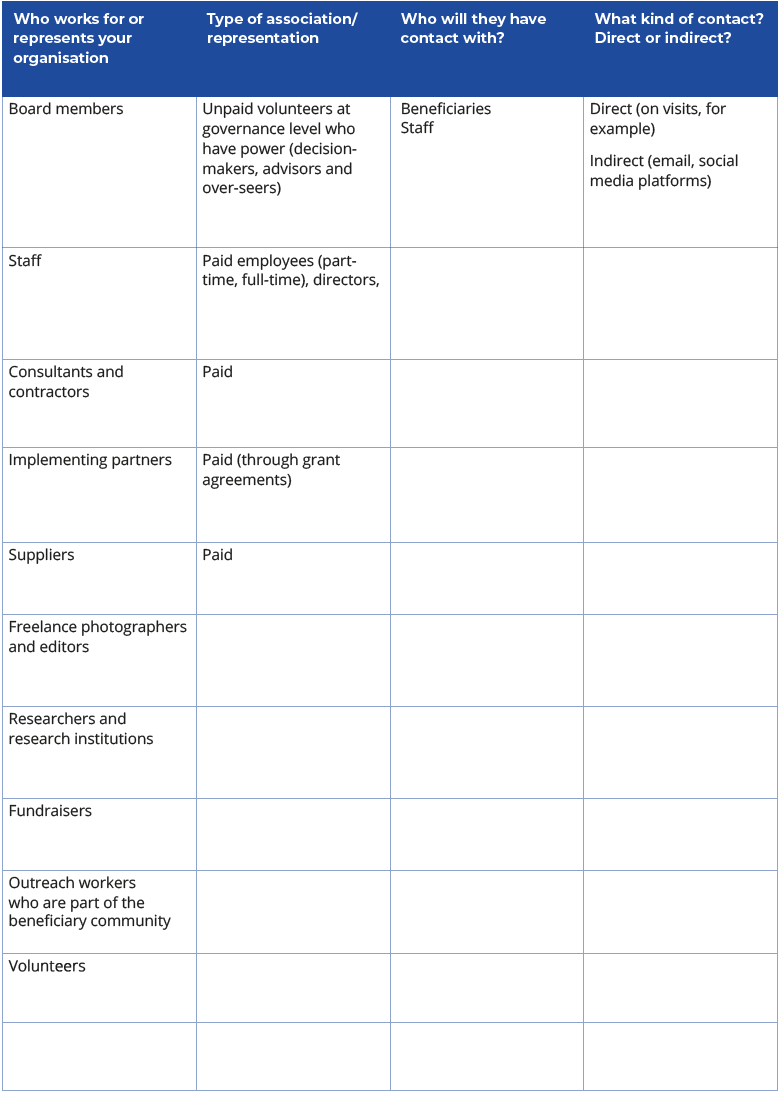Unit 3: Prevention
3.3 Safe recruitment

© Sudtawee Thepsuponkul / Shutterstock
In order to prevent prospective staff and associated personnel from harming each other or the beneficiaries for this programme, it is important to consider how they are recruited and selected in the first place.
By putting in place robust selection and recruitment processes, your organisation will be a safer organisation to all those it has contact with.
This requires an understanding of how and why potential recruits might pose a risk, and what steps can be put in place to mitigate and prevent these risks.
Even if your organisation already has a Recruitment Policy, you should use this opportunity to critically review what it contains, whether it is fit for purpose, and whether it’s applied rigorously and consistently.
|
Activity 3.3 Identifying the potential risks associated with different roles in your organisation In the example you have just used to practise your risk assessment skills there would have been a range of staff and associated personnel involved. This may include:
- Consultants to build capacity on livelihoods. In this activity you will now focus on your own organisation. Using the table below, make a list of everyone who is employed, engaged or represents your organisation in any way. Then fill in the other columns – we have filled in a few in advance as examples. It is important not to just focus on formal appointments, although they are vital, you also need to think as broadly as possible about all those who work, volunteer or are associated with your organisation. Making this list will continue to be useful because, as you will explore later, recruitment is only the start of prevention in relation to the risks you are identifying. For your information, the following applies: i. Direct contact – usually face-to-face or online ii. Indirect contact – when the person has access to images or personal information iii. Your organisational duty to safeguard is not diminished just because someone is not paid, so add everyone you know who represents or is associated to your organisation Complete all the headings for each person identified. Use this downloadable PDF version of this table to help you complete the table.
|

